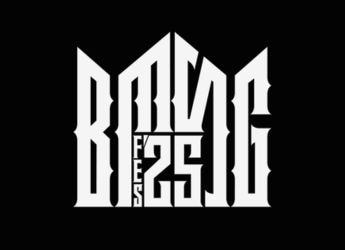- Home
- Games
- Games News
- Sony plans PlayStation 3 revamp
Sony plans PlayStation 3 revamp
By Seth Schiesel, New York Times | Updated: 8 June 2012 11:53 IST

Click Here to Add Gadgets360 As A Trusted Source

Advertisement
Slicing and thrusting through the air to control a virtual sword. Flicking your wrist to roll a digital bowling ball. Striking an imaginary golf ball down a tree-lined fairway.
Until recently these living room experiences -- using natural, intuitive human movements to control a video game -- have been available only on Nintendo's Wii console. Less powerful than Microsoft's Xbox 360 and Sony's PlayStation 3, the Wii has nonetheless become the most popular home console because of its simplicity. To play, people just need to pick up a little plastic wand and swing.
Now, four years after the Wii's introduction, Sony is basically trying to reinvent the PlayStation 3 in the Wii's image with a system called Move. Think of it as a more expensive, high-definition version of the Wii with more sophisticated games but far less charm and sheer delight. (Next month Microsoft will introduce Kinect, an ambitious new system for the 360 that does away with a handheld controller altogether.)
Like the Wii, Move is built around a wandlike wireless controller that you can, uh, move around in the air to produce action on screen. As with the Wii, you usually need to use only two buttons: one on top where your thumb rests, and a trigger underneath at the natural position of the index finger. And as with the Wii, there is an optional secondary controller for the other hand.
Technically, it works fabulously. The Move's fundamental accuracy and sensitivity to twisting and turning in three dimensions is far greater than that of the original Wii and at least as fine as Nintendo's optional Wii Motion Plus.
But technology alone does not create great entertainment value. The biggest problem with Move is its price. The basic Move package, which includes the required camera, one Move controller and the Sports Champions game (Sony's counterpart to Wii Sports), costs $99.99. An additional controller, required if you want to play with a friend, costs $49.99 more. Add in a secondary navigation controller (required for some games), and that will set you back an additional $29.99. And if you're going to play regularly with others, you're almost certainly also going to need the optional charging station (another $29.99), because, unlike Wii controllers, Move wands don't take batteries.
So if you own a basic PS3 and want a full Move system to play, say, beach volleyball or swordfighting with a friend, you're looking at an investment of roughly $240, and that's before taxes and buying any actual games. If you're starting from scratch and don't own a PS3, a similar setup would cost about $540.
The second major problem with Move is that it can be finicky to use. In Sony's basic Sports Champions, for instance, you must recalibrate the position of the Move controller every time you start a new session or contest. Sometimes, when booting up a complex game like the virtual pet simulator EyePet, the system recognizes the Move controller flawlessly, and other times you find yourself in a vortex of frustration just trying to get it to work. The Move may be technically more advanced than the Wii controller (using both a camera and internal motion sensors), but that very quality prevents Move from being as easy to use as the competition.
Of course the PS3 does plenty of things the Wii doesn't, like play Blu-Ray discs and display gorgeous high-definition graphics. But for the budget-conscious consumer looking for a simple game system that the whole family can enjoy together, the Wii remains the sensible choice.
As to whether Move enhances the interactive entertainment experience enough to persuade existing PS3 users to upgrade, it depends on what you're looking for.
I have been able to play 13 different Move-enabled titles recently, including sports games like the latest Tiger Woods golf game, the kid-friendly Start the Party and the strategy game called RUSE (Capsule reviews of all 13 games I have played on the Move can be found online at nytimes.com/artsbeat.)
In general, Move enhances adventure and individual sports games while doing little for traditional shooters and team sports. By far the most interesting use of Move was exhibited by EyePet, which actually puts you on the floor in front of your television to play with a furry digital companion that responds to your "touch" and even to the sound of your hands clapping.
In the end, though, Move is nothing close to the watershed in home electronic entertainment that the Wii was four years ago. Still, I will enthusiastically be using Move to play Tiger Woods golf, the noir thriller Heavy Rain and much of the light adventure The Lord of the Rings: Aragorn's Quest. When my friends want to play disc golf, tennis or Ping-Pong, I will probably turn on my PS3 and Move instead of the Wii. And the next time I have a child over to visit, I will definitely put him or her in front of EyePet. In these games the greater sense of physicality enhances the fun more than merely pressing buttons does.
But as a reviewer, I get this stuff free. For a family that has already invested in a Wii and lots of Wii games, spending the money to replace all of that on the PS3 and Move is going to be a tough sell for now, especially with Microsoft's Kinect around the corner. At least Sony isn't sitting around. Now we just need to see more of the truly innovative games that will (Sony hopes) make the Move a must-have.
Until recently these living room experiences -- using natural, intuitive human movements to control a video game -- have been available only on Nintendo's Wii console. Less powerful than Microsoft's Xbox 360 and Sony's PlayStation 3, the Wii has nonetheless become the most popular home console because of its simplicity. To play, people just need to pick up a little plastic wand and swing.
Now, four years after the Wii's introduction, Sony is basically trying to reinvent the PlayStation 3 in the Wii's image with a system called Move. Think of it as a more expensive, high-definition version of the Wii with more sophisticated games but far less charm and sheer delight. (Next month Microsoft will introduce Kinect, an ambitious new system for the 360 that does away with a handheld controller altogether.)
Like the Wii, Move is built around a wandlike wireless controller that you can, uh, move around in the air to produce action on screen. As with the Wii, you usually need to use only two buttons: one on top where your thumb rests, and a trigger underneath at the natural position of the index finger. And as with the Wii, there is an optional secondary controller for the other hand.
Technically, it works fabulously. The Move's fundamental accuracy and sensitivity to twisting and turning in three dimensions is far greater than that of the original Wii and at least as fine as Nintendo's optional Wii Motion Plus.
But technology alone does not create great entertainment value. The biggest problem with Move is its price. The basic Move package, which includes the required camera, one Move controller and the Sports Champions game (Sony's counterpart to Wii Sports), costs $99.99. An additional controller, required if you want to play with a friend, costs $49.99 more. Add in a secondary navigation controller (required for some games), and that will set you back an additional $29.99. And if you're going to play regularly with others, you're almost certainly also going to need the optional charging station (another $29.99), because, unlike Wii controllers, Move wands don't take batteries.
So if you own a basic PS3 and want a full Move system to play, say, beach volleyball or swordfighting with a friend, you're looking at an investment of roughly $240, and that's before taxes and buying any actual games. If you're starting from scratch and don't own a PS3, a similar setup would cost about $540.
The second major problem with Move is that it can be finicky to use. In Sony's basic Sports Champions, for instance, you must recalibrate the position of the Move controller every time you start a new session or contest. Sometimes, when booting up a complex game like the virtual pet simulator EyePet, the system recognizes the Move controller flawlessly, and other times you find yourself in a vortex of frustration just trying to get it to work. The Move may be technically more advanced than the Wii controller (using both a camera and internal motion sensors), but that very quality prevents Move from being as easy to use as the competition.
Of course the PS3 does plenty of things the Wii doesn't, like play Blu-Ray discs and display gorgeous high-definition graphics. But for the budget-conscious consumer looking for a simple game system that the whole family can enjoy together, the Wii remains the sensible choice.
As to whether Move enhances the interactive entertainment experience enough to persuade existing PS3 users to upgrade, it depends on what you're looking for.
I have been able to play 13 different Move-enabled titles recently, including sports games like the latest Tiger Woods golf game, the kid-friendly Start the Party and the strategy game called RUSE (Capsule reviews of all 13 games I have played on the Move can be found online at nytimes.com/artsbeat.)
In general, Move enhances adventure and individual sports games while doing little for traditional shooters and team sports. By far the most interesting use of Move was exhibited by EyePet, which actually puts you on the floor in front of your television to play with a furry digital companion that responds to your "touch" and even to the sound of your hands clapping.
In the end, though, Move is nothing close to the watershed in home electronic entertainment that the Wii was four years ago. Still, I will enthusiastically be using Move to play Tiger Woods golf, the noir thriller Heavy Rain and much of the light adventure The Lord of the Rings: Aragorn's Quest. When my friends want to play disc golf, tennis or Ping-Pong, I will probably turn on my PS3 and Move instead of the Wii. And the next time I have a child over to visit, I will definitely put him or her in front of EyePet. In these games the greater sense of physicality enhances the fun more than merely pressing buttons does.
But as a reviewer, I get this stuff free. For a family that has already invested in a Wii and lots of Wii games, spending the money to replace all of that on the PS3 and Move is going to be a tough sell for now, especially with Microsoft's Kinect around the corner. At least Sony isn't sitting around. Now we just need to see more of the truly innovative games that will (Sony hopes) make the Move a must-have.
Comments
Get your daily dose of tech news, reviews, and insights, in under 80 characters on Gadgets 360 Turbo. Connect with fellow tech lovers on our Forum. Follow us on X, Facebook, WhatsApp, Threads and Google News for instant updates. Catch all the action on our YouTube channel.
Related Stories
Popular on Gadgets
- Samsung Galaxy Unpacked 2025
- ChatGPT
- Redmi Note 14 Pro+
- iPhone 16
- Apple Vision Pro
- Oneplus 12
- OnePlus Nord CE 3 Lite 5G
- iPhone 13
- Xiaomi 14 Pro
- Oppo Find N3
- Tecno Spark Go (2023)
- Realme V30
- Best Phones Under 25000
- Samsung Galaxy S24 Series
- Cryptocurrency
- iQoo 12
- Samsung Galaxy S24 Ultra
- Giottus
- Samsung Galaxy Z Flip 5
- Apple 'Scary Fast'
- Housefull 5
- GoPro Hero 12 Black Review
- Invincible Season 2
- JioGlass
- HD Ready TV
- Laptop Under 50000
- Smartwatch Under 10000
- Latest Mobile Phones
- Compare Phones
Latest Gadgets
- Honor Win RT
- Honor Win
- Xiaomi 17 Ultra Leica Edition
- Xiaomi 17 Ultra
- Huawei Nova 15
- Huawei Nova 15 Pro
- Huawei Nova 15 Ultra
- OnePlus 15R
- Asus ProArt P16
- MacBook Pro 14-inch (M5, 2025)
- OPPO Pad Air 5
- Huawei MatePad 11.5 (2026)
- Xiaomi Watch 5
- Huawei Watch 10th Anniversary Edition
- Acerpure Nitro Z Series 100-inch QLED TV
- Samsung 43 Inch LED Ultra HD (4K) Smart TV (UA43UE81AFULXL)
- Asus ROG Ally
- Nintendo Switch Lite
- Haier 1.6 Ton 5 Star Inverter Split AC (HSU19G-MZAID5BN-INV)
- Haier 1.6 Ton 5 Star Inverter Split AC (HSU19G-MZAIM5BN-INV)
© Copyright Red Pixels Ventures Limited 2025. All rights reserved.
-
 OpenAI, Anthropic Offer Double the Usage Limit to Select Users Till the New Year
OpenAI, Anthropic Offer Double the Usage Limit to Select Users Till the New Year
-
 Samsung to Reportedly Start Manufacturing Its Next-Gen AI Memory Chip in 2026
Samsung to Reportedly Start Manufacturing Its Next-Gen AI Memory Chip in 2026
-
 Honor Magic 8 RSR Porsche Design With Snapdragon 8 Elite Gen 5 SoC Could Launch in Early 2026
Honor Magic 8 RSR Porsche Design With Snapdragon 8 Elite Gen 5 SoC Could Launch in Early 2026
-
 BMSG FES’25 – GRAND CHAMP Concert Film Now Streaming on Amazon Prime Video
BMSG FES’25 – GRAND CHAMP Concert Film Now Streaming on Amazon Prime Video










